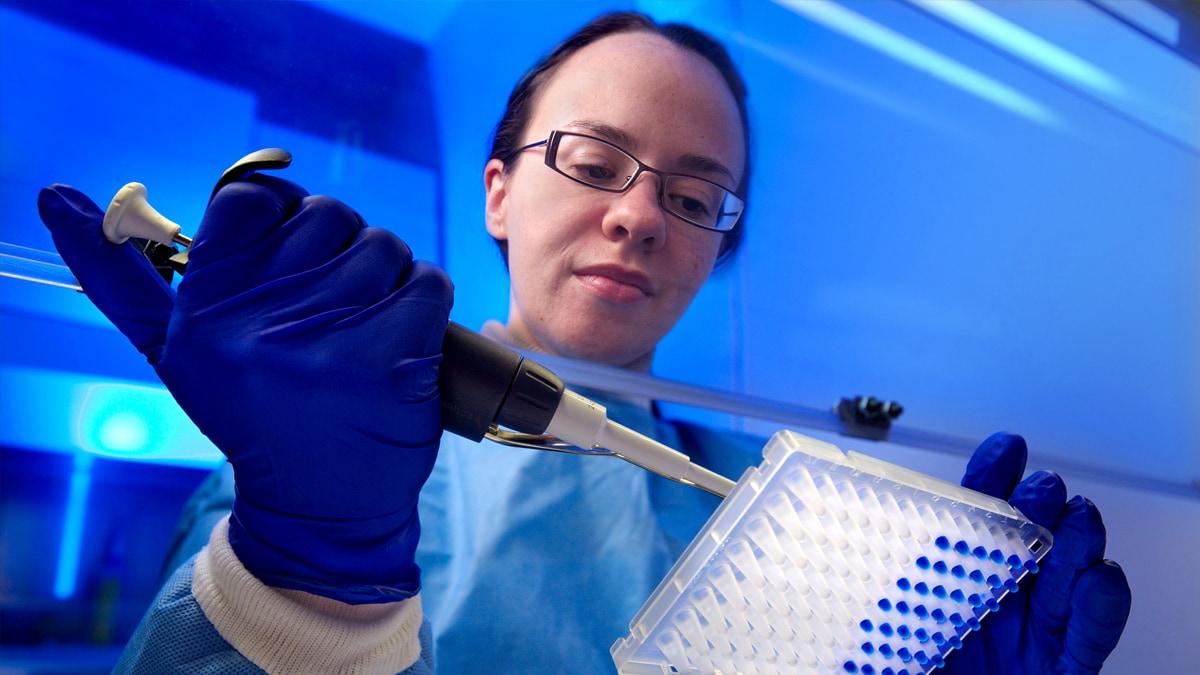What to know
The sooner public health professionals identify a pathogen making people sick, the sooner they can take steps to protect people and stop further illnesses. AMD methods give public health departments the ability to identify infectious pathogens quickly. In addition, these tests provide important information not available with earlier testing methods, such as whether the pathogens are resistant to antimicrobials or vaccines.

Leveraging metagenomic technologies
Imagine taking a small, clinical sample, such as a drop of blood. Then use that drop to test for numerous infectious pathogens all at the same time. That is what metagenomics could do to help us fight diseases.
CDC is leveraging AMD technologies to develop metagenomics methods to detect myriad infectious diseases, including foodborne bacterial infections, influenza, tuberculosis, and parasitic diseases. With AMD methods, we may one day have rapid testing for all illnesses.
In addition, the tests might not only tell us which pathogen caused the disease but also important genetic information at the same time. These tests could help identify whether the illness is caused by a specific strain or which treatments will be effective.

Finding HIV faster
Early testing is crucial to curbing the spread of HIV. People are most infectious and most likely to transmit the virus to others in the early stages of infection. However, before current rapid HIV tests can detect the virus, a person must be infected for 3 to 12 weeks. Those weeks are precious time in which that person could unknowingly be infecting other people.
CDC scientists are using AMD to develop new rapid diagnostic tests to detect HIV sooner. Blood can be collected with a finger prick, and the test results can be given back to the person within the same day. These methods are less costly than traditional tests and do not require specialized equipment.
With these new, accurate, affordable, and portable tests, people can find out their HIV status within days of transmission. They will be able to start taking antiretroviral medications as soon as they know they are infected, reducing the risk of spreading the virus. With these tests, CDC scientists are gaining valuable information that will lead to improved HIV testing and more rapid diagnoses.
